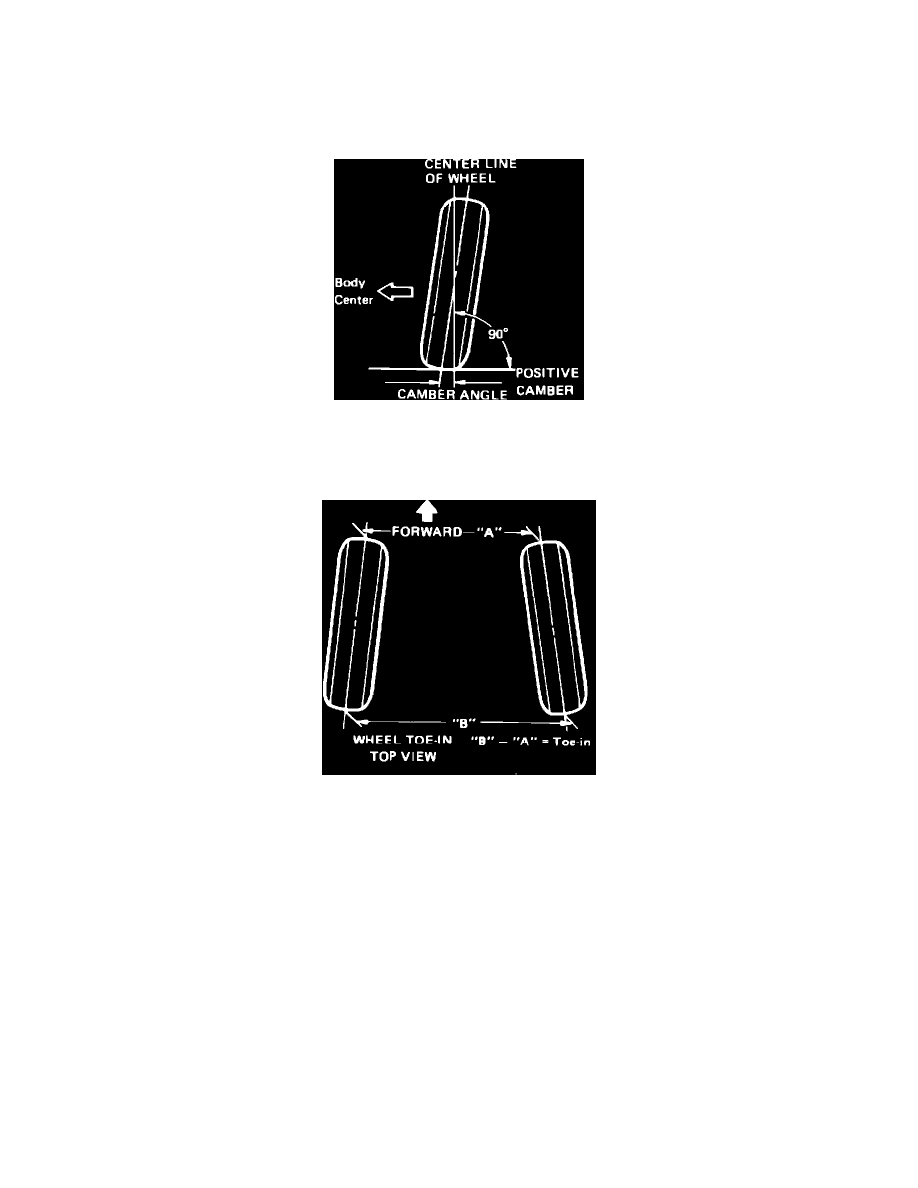Samurai 4WD L4-1324cc 1.3L SOHC 5 Carb 8V (1986)

Alignment: Service and Repair
DESCRIPTION
Wheel alignment is the angular relationship between the front wheels, front suspension attaching parts and the ground. The only adjustment required is
toe. Camber and caster cannot be adjusted. Should camber or caster be out of specification due to hazardous road conditions, collision, whether the
damage is in the chassis frame (body) or in suspension should be determined and body damage repaired and suspension parts replaced.
Fig. 1 Camber angle
Camber is the tilting of front wheels from the vertical, when viewed from front of vehicle, Fig. 1. When the wheels tilt outward at the top, camber is
positive. When wheels tilt inward at the top, camber is negative. Amount of tilt is measured in degrees.
Fig. 2 Toe-in
Toe is the turning in or out of the front wheels, Fig. 2. The purpose of toe is to ensure parallel rolling of the front wheels. Excessive toe-in or toe-out
may increase tire wear. Amount of toe can be obtained by subtracting ``A'' from ``B'' as shown in Fig. 2, and is given in inches or millimeters.
ADJUSTMENTS
Camber & Caster
Should camber or caster be out of specification when inspecting, locate its cause. If cause is damaged, loose, bent, dented or worn suspension parts,
they should be replaced. If it is chassis frame (body), repair it. To prevent incorrect reading of camber or caster, vehicle front end must be moved up
and down several times before inspection.
Toe
Before making any adjustments, the following checks and inspections should be made to ensure correct alignment readings and alignment adjustments:
1.
Check tires for proper inflation pressures and thread wear.
2.
Check steering and suspension system for looseness. If excessive looseness is noted, it must be corrected before adjusting.
3.
Check for run out of wheels and tires.
4.
Consideration must be given to excess loads, such as tool boxes. If this excess load is normally carried in vehicle, it should remain in vehicle
during alignment checks.
